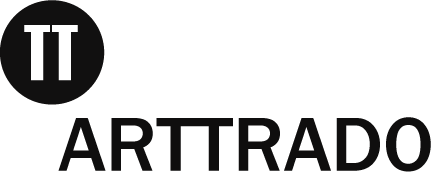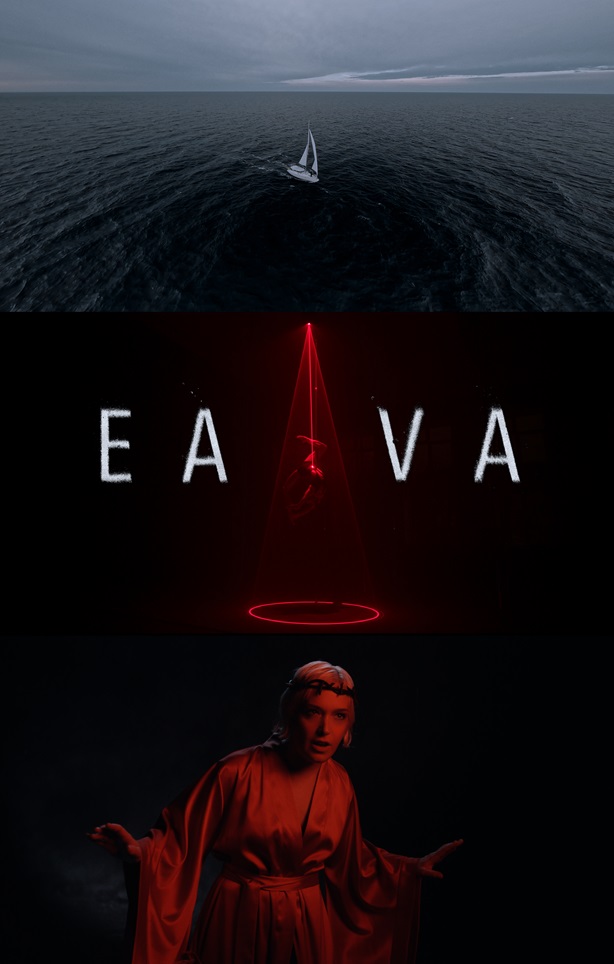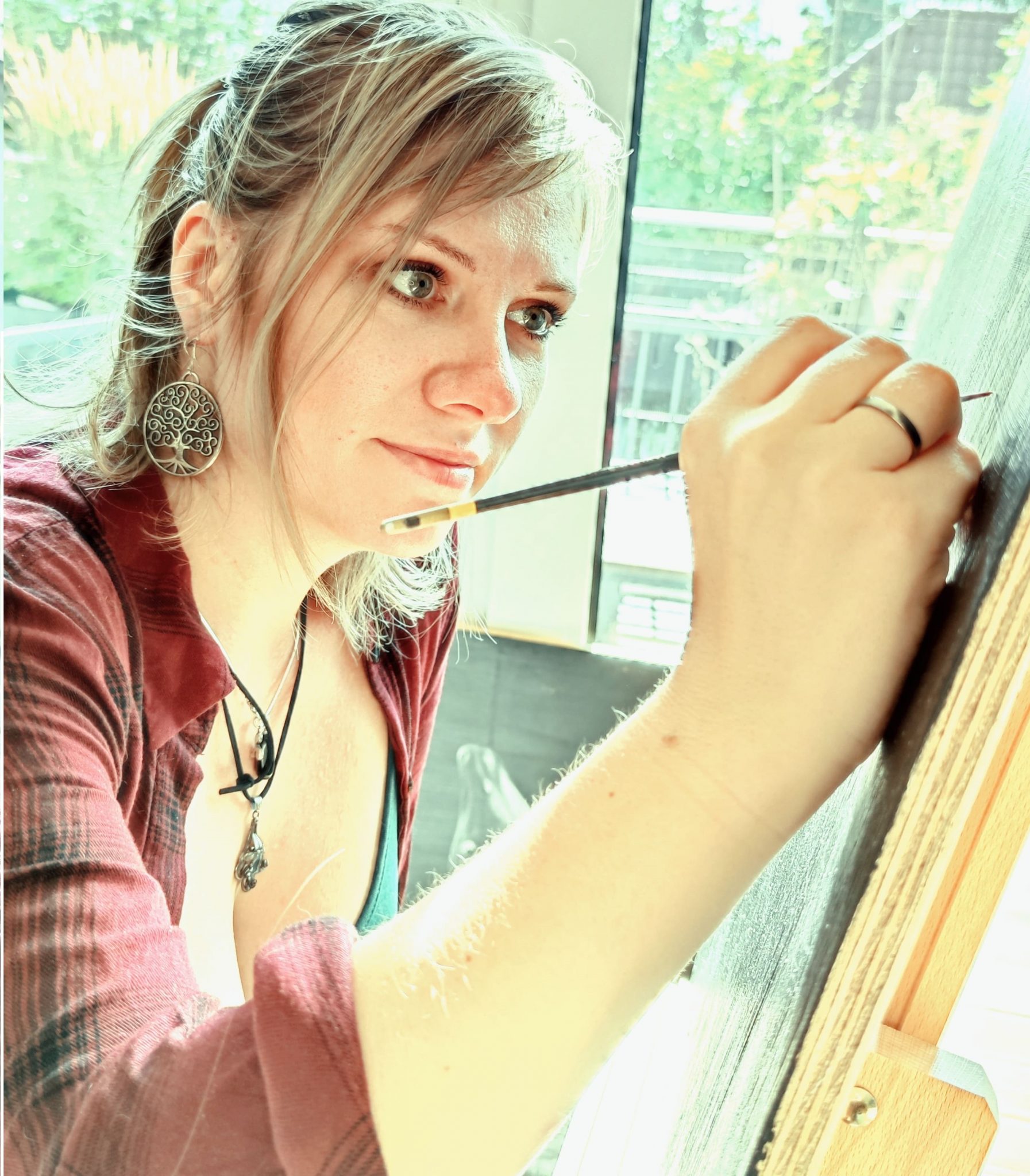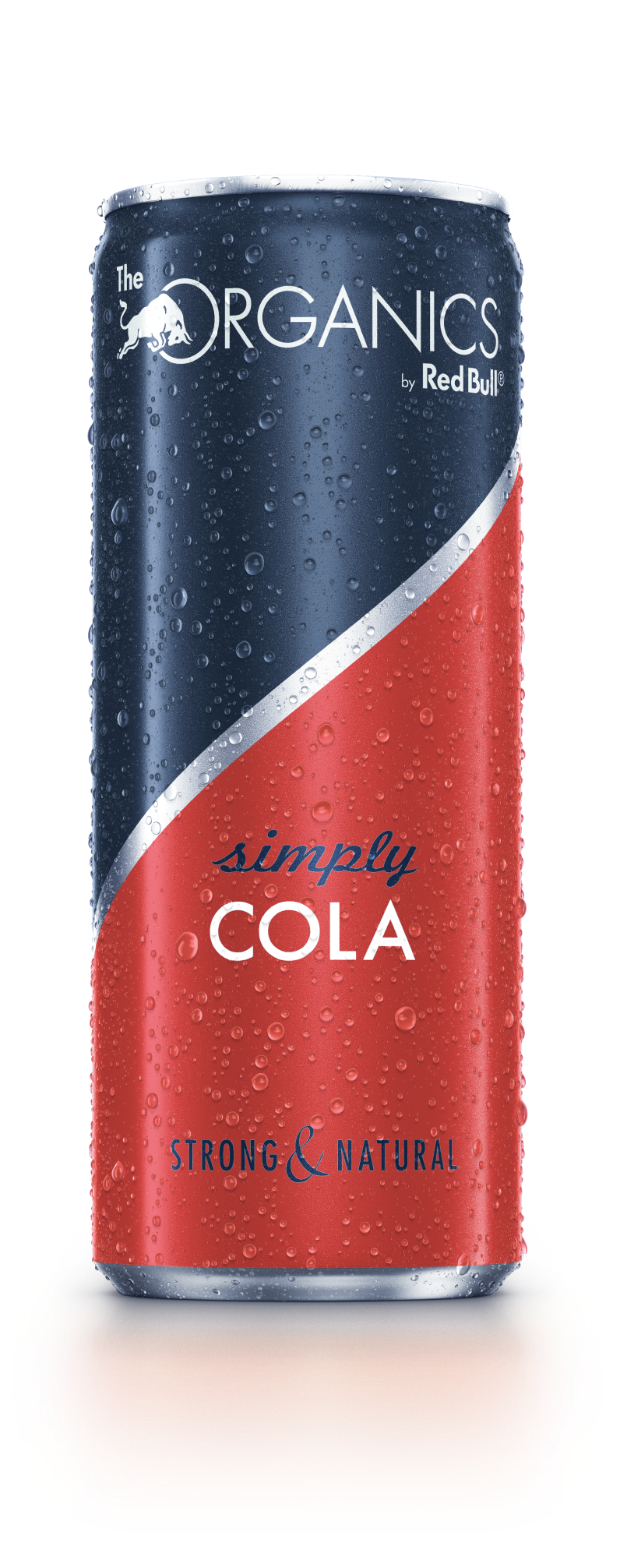Anna Matskova is a film editor and film director from Moscow. She has been working in the film industry for more than 10 years since graduating from the Moscow Institute of Cinematography. Her main focus is producing eye-catching artistic videos for the fashion and music industries.
Film editor and film director Anna Matskova in an Interview
For the fashion industry Anna Matskova offers brand advertising and general product advertising videos. Matskova makes video clips for performance artists and musicians. She is currently working on two projects: a music video for the singer EAVA, which is their third project together, and a full-length film for theatrical distribution.
In this interview we would like to get to know the film artist Anna Matskova better – if you are interested in a collaboration/production – please feel free to contact us. The German translation of the interview will follow soon.
Anna Matskova in an Interview
What cultural influences from Russia inform your films, and how do they shape your creative process as a filmmaker?
My works are influenced by contemporary art, choreography, and music, which inspire me the most. Music plays a key role in my works, as I use it to interact with viewers in a non-verbal way by employing figurative narrative to express my ideas.
As an Art Director, you have a unique perspective on visual aesthetics. How do you strike a balance between cultural authenticity and universal accessibility in your projects?
My main approach is to find a balance between cultural authenticity and artistic universality, which allows viewers to understand the message independently of their backgrounds. I am grateful to my teachers, who gave me the opportunity to learn from outstanding examples. I always avoid clichés and bring my own original associative images with elements of universal symbolic representations.
What challenges do you see in the film industry, especially for women and creative minds from Russia, and how do you attempt to overcome them?
The main challenge of modern video art is its narrow focus on monetization. The monetization trend shapes the whole media space and its content, influencing the audience and forming their tastes. It leaves almost no space for original creative projects that do not fit into the general commercialization trends. It is a pity that such projects are simply lost like a needle in a haystack. I see my mission in creating such content, and that is why I highly appreciate this platform, which promotes creative projects and lets the general audience learn about them.
Can you provide insights into the use of symbolism and visual metaphors in your works and how they contribute to storytelling?
I am very keen on using metaphors and figurative language, which allow me to express ideas more efficiently than «the language of realism» due to the visualization techniques and their subconscious nature. I employ music as a tool to identify appropriate but unexpected images. And like to lie down, close my eyes, listen to music, and let my imagination fly to create new images for my works. I want to provoke my viewers to discover the meanings of my works through their own mental processing of the content, which is not illustrative by itself. I believe that the greater immersion and involvement of the viewer is a crucial aspect.
Which current trends or developments in the Russian film industry currently fascinate or inspire you the most?
There are many contemporary art exhibitions and festivals, where you can find inspirational works of other authors and also present your own works. I displayed my work «VACUUM» on a 360o screen in the Atma360 space as part of the Genesis festival.
Vacuum AV Project/Genesis² by Anna Matskova
VACUUM is a dance, short performance film created by director Anna Matskova and composer Ilya Symphocat. This work combines dance performance by Elsa Serova, Laran Laraan and the dance group FarFor YO (choreographer Banzay BNZ), as well as ambient, choral music and sound design.
VACUUM, can be seen as an immersive, group process of immersion in the magnetism of an archaic and primordial world, flowing into our present and tangible reality. It’s an opportunity to immerse yourself in one shared emotional experience of purification and destruction, depending on which atmospheric fronts or urban landscapes you choose to stay in.
The aim of the film was to explore and capture the moment of unity of a man and a woman outside of time and circumstances, as if in a vacuum – in the nature environment. And the gradual destruction of this harmony with their immersion in urban space.
I also directed and filmed a performance for the opening of the online Gamma Festival 2020, during the Covid-19 restrictions. The festival attracted over 6 000 viewers. The idea behind my piece was the limitations put on the society and its artistic freedom during the covid pandemic.
OSTINATO Audio-visual performance based on the method of musical and artistic composition „ostinato“, that interprets the repeated repetition of a melodic phrase, rhythmic figure or harmonic turn.
Performance can be considered as a reflection on the events happening to us nowadays. The space for creating a work becomes an old Stepan Razin factory in industrial area of Saint Petersburg.
Performers use the actual attributes of our reality, familiar during pandemic to everyone: face masks, striped tapes, form of communication in online broadcast. They capture the experience of events through the prism of artistic perception, combining music, choreography, vocal improvisation and creating a media sculpture on the ruins of the past.
How do you maintain a coherent visual language as an Art Director across different projects, and which elements are particularly important to you?
I choose an aesthetic minimalism for my visualization language. I adhere to a clearly structured composition within the frame, lacking unnecessary elements. This may sometimes look unnatural, but it lets me emphasize the main visual narrative and immediately attract the viewer’s attention in a purposeful way.
What creative techniques do you employ to emotionally engage audiences in your stories and create a deeper connection?
Besides music, I use dance performance in my works to engage viewers emotionally. The body language conveys emotions as well as hidden messages. I usually work with the street dance and performance group FarFor.
In your role as a filmmaker and Art Director, how do you view your responsibility in promoting cultural diversity and inclusion in the film industry?
I tend to adhere to a certain ideology and convey certain concepts in all my works, including commercial ones. I clearly do not welcome plagiarism and copy-cuts of others’ ideas or views, i am in favor of authenticity, self-identity, and independence. Believe that only this approach will bring something new into our culture and cinema.
How do you select the visual elements for your projects to evoke the desired mood and atmosphere?
Natural environment is an important visual element of my works. Its main purpose is not just to serve as a beautiful background, but to be a key component along with the actors and the action in the frame. I choose the environmental scenes very carefully, which usually takes some weeks or even months to find the right locations. For example, it took me several months of traveling and studying maps to choose filming locations for «VACUUM» before I started shooting. I wanted to find a natural background unscathed by human activity, but also wild and beautiful, serving as a counterpoint to large asphalted squares with no room for wildlife. In the end, I found what I needed. To make it even more readable, I came up with the idea of shooting this work from a bird’s-eye view using drone footage.
What artistic influences have most shaped your work as an Art Director, and how do they manifest in your projects?
As an artist and filmmaker, I was influenced primarily by classical education, which shaped my vision influenced with the study of contemporary culture. Among my favorite authors are such film classics as: Michelangelo Antonioni, Andrei Tarkovsky, Sergey Urusevsky, Gaspar Noé, Denis Villeneuve, Alex Garland, Hayao Miyazaki, The_Wachowskis, Alberto Mielgo.
My favorite fiction authors are: Hermann Hesse, Fyodor Dostoevsky, Mikhail Lermontov, Ray Bradbury, Philip K.Dick, Gabriel García Márquez, Julio Cortázar Artists: M. C. Escher, Leonardo da Vinci, Mikhail Vrubel, Arkhip Kuindzhi.
Photographers: Ben Zank, Lesliezhang, Zeng Wu, Simon Stalenhag, Olafur Eliasson.
Computer game creator: Hideo Kojima
Modern choreography: Damien Jalet
Music: Hans Zimmer, Steve Roach, Burial, Aes Dana
Fashion: Alexander McQueen, Rick Owens
I find in the works of these authors very influential and share their spirit and vision of the world.
Could you share your approach to selecting film music and sound design to enhance the emotional resonance of your works?
I give great importance to the music in my works. Ilya Symphocat, a modern Russian composer, has been the music author for almost all of my works. Ilya writes music in the ambient genre, which, in combination with the visual content, creates a certain atmosphere that draws the viewer into a meditative perception. We share a similar vision, and I think it is very important for collaborative creativity.
What role does collaboration with other creative minds, such as scriptwriters or cinematographers, play in bringing your visions to life?
I’m very careful when it comes to staff my projects. I choose people with similar visions so that together we can create something that expresses our common views. It’s important for me to involve everyone in the project and showcase their talent.
How do you deal with creative blocks or challenges during the creative process?
I feel very inspired when it comes to filming, which I always approach very diligently. I create an atmosphere on set that energizes everybody who works with me, and i have no roadblocks when it comes to work.
What technologies or innovative approaches do you use to maximize the visual quality of your projects?
I film my projects on professional cameras of the latest generation, such as ARRI Alexa and RED Comodo. I often use drones for shooting, including such brand names as Mavic-pro and action drone fpv and also use computer graphics in my works.
How do you maintain your artistic signature while adapting to different genres or projects as an Art Director?
If I work on a commercial project, I often have to adapt to the customer’s taste, but my artistic vision and selection of references and sketches help to inspire and find a common language.
Which aspects of film design – be it lighting, costumes, or sets – are particularly crucial to you in creating a compelling visual narrative?
In my work, I pay attention to every detail. I think through the shot, the characters’ image, and work closely with the cameraman, stylist, artist, and others. In all aspects, I have a clear vision and have developed an effective way of interacting with other team members. On occasion, I find new effective solutions on how to overcome difficulties.
I was strongly influenced by my parents, who are artists. All my childhood, I drew pictures, at first just sketches, then illustrations for books I read, and later comics I created myself.
What projects or experiences have left a lasting impact on your artistic development, and how have they influenced your perspective?
All my childhood, I drew pictures, at first just sketches, then illustrations for books I read, and later comics I created myself. At some point, I realized that the format of the paper canvas, limited to the plane and two-dimensional image, was not enough for me. I entered a two-year animation study program. After graduation, I realized that I wanted to make movies and entered the Institute of Cinematography VGIK in Moscow. I believe that cinema has an interesting principle that distinguishes it from other art forms.
This principle is that for the first time in the history of art, for the first time in the history of culture, man has found a way to directly capture time. And at the same time – the possibility to reproduce the passage of this time on the screen, to repeat it, to return to it. Man has got the matrix of real time in his hands». – Quote by Andrei Tarkovsky from the article „Captured Time“.
I find this vision fundamental to my work.
Could you tell us about your creative beginnings and how you found your individual artistic expression?
I do not think I created or invented my style. Rather, I discovered and brought to the surface something that existed naturally from the moment of my birth. As a child, I liked watching movies and going to exhibitions. I singled out authors I liked. Nevertheless, I didn’t try to imitate them. I was always excited with an idea of doing something new, never existing before. I saw this as the ultimate purpose of my existence. Over time, my maximalism has cooled down, and I’m not chasing something unrealistic anymore. I still stick to the idea that my works will always find their audience. It is important for me to keep mental integrity and authenticity, to be independent of short-term influences and the opinion of the masses. I believe this is key to my success.
As a child, I didn’t like to play with toys from stores. I made the sets and characters myself, invented plots. You could say that what I do now takes its roots in my childhood. I still play my favorite game of making up stories and bringing them to life.
Why did you choose Art Direction, and what aspects of this role appeal to you the most in terms of creative filmmaking?
I have always loved making up stories and bringing them to life. I found a continuation of this approach in my professional life, i believe that a person should choose their life’s work to enjoy it, to live it, only then is it possible to do something worthy.
To what extent does your background or personal history influence your artistic work, and how do these elements find their way into your projects?
In my works, I try to create a world that is not tied to a specific real place and time. Almost everything plays out in a parallel universe, but some works are influenced by real events. For example, my work «The Fire Is Gone» was created when the war in Ukraine started. In this work, I tried to express my attitude towards wars in general without being tied to a specific situation. The war served as an impetus for my reflections.
What significance does the connection between film and art hold for you, and how do you incorporate artistic principles into the visual design of your films?
Cinema can be called a synthesis of all kinds of arts. It is not possible to involve the viewer fully or strike all strings of their soul without the combined help of the plot, visuals, and music. This is only possible in art that combines all these aspects together. That’s why I chose cinema and want to develop further as a filmmaker.
What advice would you give to young, aspiring artists interested in a career in filmmaking and Art Direction?
I would advise young artists aspiring to become a film director or an art director to start with a high-quality education in the field, read a lot, listen to good music, and watch prominent movies. Then bind it together with your own personal vision and experience. I would like to quote Andrei Tarkovsky again: «An artist begins when their idea or their film has its own special image structure, its own system of thoughts about the real world, and the director presents it to the viewer, shares it with the viewer as their most cherished dreams. Only when they have their own way of looking at things, becoming a kind of philosopher, do they act as an artist.»
Thank you for your time and effort! I’m looking forward to your next projects!
More Informations
Collaborations and project implementations are also possible in Germany or Europe. If you have any project inquiries or cost estimates for video productions by Anna Matskova, please feel free to contact us.
Art Events selected by us can be found under >>> Events <<<
You can find our interviews here: Interview | Arttrado.de
If you want to tell us about your exciting art project, use our contact.
You can also find special works of art in our shop.





